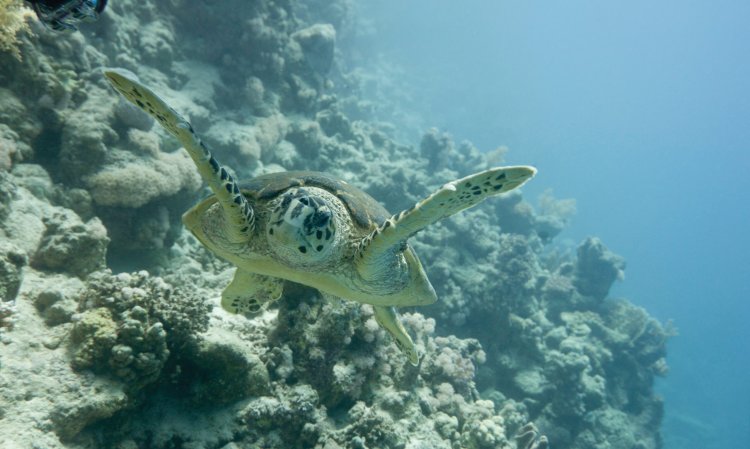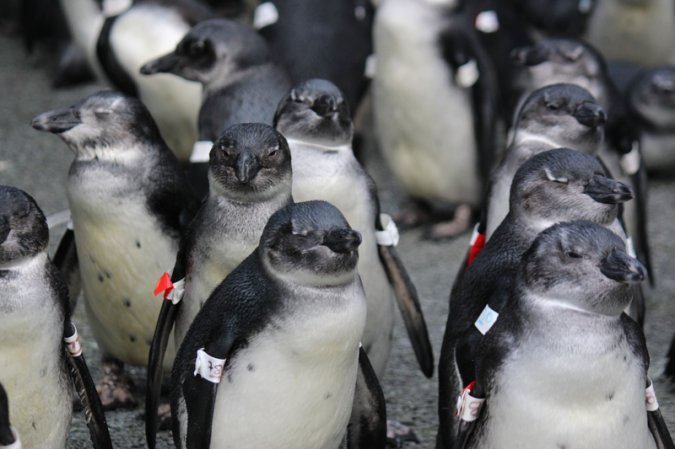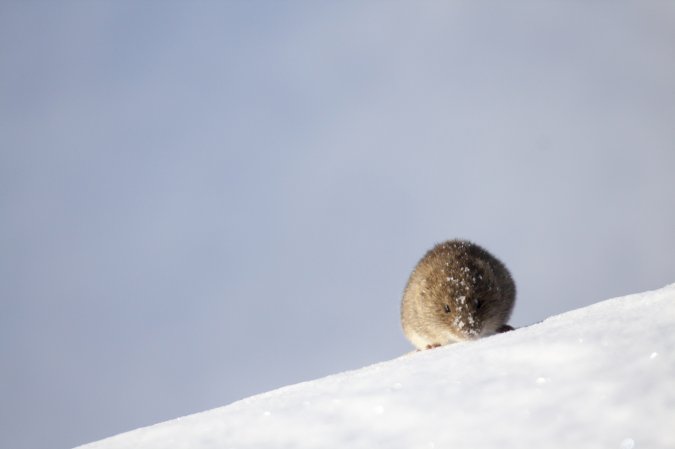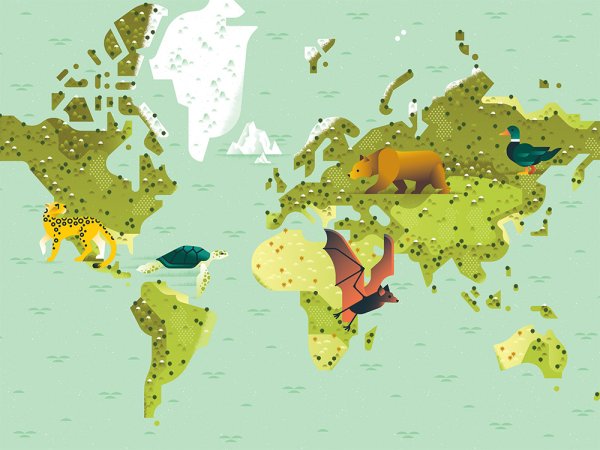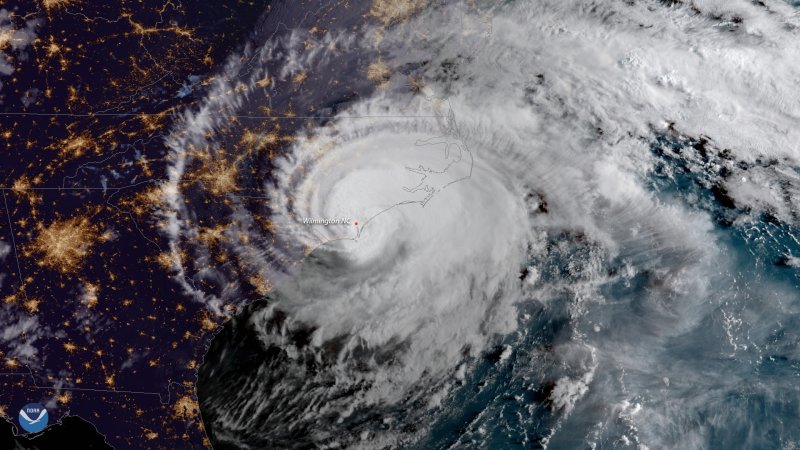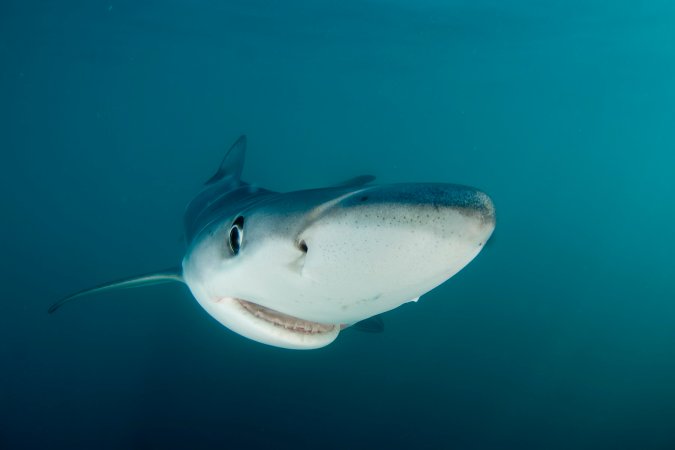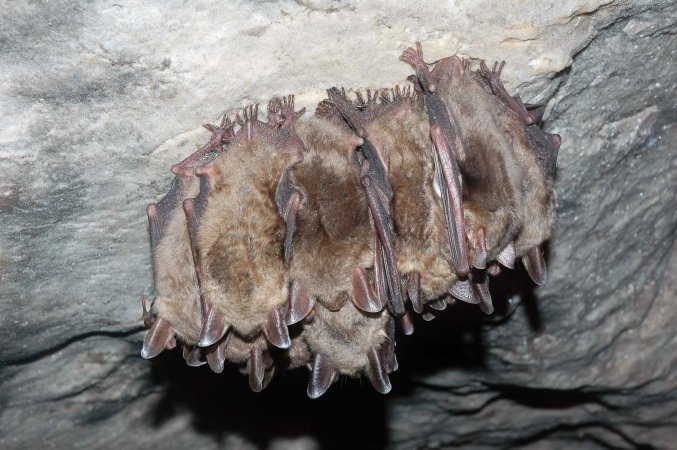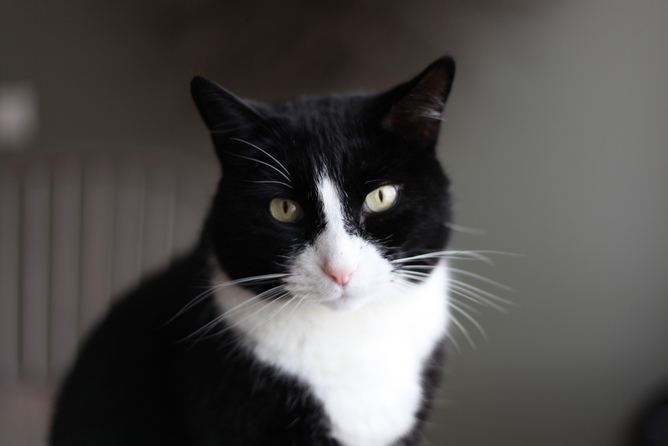

A computer in space is helping researchers tune in to the movements of animals on Earth through a project led by the Max Planck Society in Germany. It’s called the International Cooperation for Animal Research Using Space, or Icarus for short, and it’s being used to track the behaviors and migrations of birds, bats, turtles, bears, cheetahs, jaguars, and more. The project uses a network of wearable sensors on animals to transmit on-the-ground data to an Icarus antenna on the International Space Station.
The goal is to create an “internet of animals” that can tell researchers how ecosystems are changing in real-time and how animals are responding to those changes. This, they imagine, would be done by combining information from the wildlife wearables with other data on animal behaviors across space, time, and different environments.
For example, to understand if the boundaries of wetlands are changing, they would look at shorebirds. If they want to look at snowmelt, they would follow the movement of geese. If they wanted to look at disease transmission, they could track how bats are moving around in Africa. And if they tagged animals that lived around a volcano, then, if these animals start behaving erratically, researchers can see if the unusual movement patterns can help them make predictions about when the volcano will erupt.
“Those kinds of things are ground measures. It’s hard to get a remote sensing system to do that because you can’t tune into all the senses an animal has,” says Martin Wikelski, research director at the Max Planck Institute of Animal Behavior in Germany. “We’re using these animals and their senses, especially their interactive senses, as a tool to understand what’s happening.”
In a paper published this week in the journal Trends in Ecology and Evolution, the team provides an overview of the data they’ve been able to collect with the system so far, and outlines what they imagine the next steps to be.
Icarus came online officially in March 2020. A pilot project on blackbird migration across continents and climate conditions began a few months later.
[Related: Boaty McBoatface’s new mission is more serious than its name]
Before the system could be switched on, researchers and volunteers had to outfit different animals across a variety of species with tiny tags containing sensors that could record information on the animal’s GPS position, movement, and its surrounding environment. These transmitters, weighing only a few grams, hold a lithium-ion battery, a radio, GPS, and control module with sensors for measuring acceleration, magnetic fields, temperature, humidity, and pressure. The battery, which enables measurements and data transfer, can be recharged through the solar cell atop the plastic housing. Two antennas jut out from the transmitter: a 200mm long one for radio transmission, and a 50mm long one for GPS.
The tag will transmit data whenever the space station comes within radio range. Each data packet is usually around 220 bytes and can be relayed in 3.5 seconds. The receiving computer on the ISS processes and forwards the data to a ground control center, which distributes it to the scientists on the Icarus team. After the team goes through the data, they will store it on an open online database called Movebank, hosted by the Max Planck Institute of Animal Behavior (the database receives funding from NASA and the NSF). The team has even built movement profiles for some animals in the Icarus system.
The tags are equipped with a two-way communication system, which means they can be reprogrammed remotely. This type of system makes the whole data collection process more efficient because the satellite computer can tell the tag not only when to communicate but what to communicate and what data it should gather next.

[Related: While you sleep, scientists will use a space telescope to spy on migrating birds]
Beyond the space-based system, Icarus has a citizen science arm as well. A free animal tracker app is available to the public, and users can document animal observations or upload photos which are shared with scientists via the Movebank database.
In the discussion section of their recent paper, the team called for more scientists globally to use and contribute to the system to help advance the data collection and research potential of the technology for studying the life cycles of animals, the movement of zoologic pathogens, the interactions between animals and humans, and animal responses to natural disasters.
The Max Planck-Yale Center is raising funds to purchase more sensors, which cost about $300 per transmitter tag. The long-term mission is to build a cohort of around 100,000 animal sentinels from 500 species of birds, mammals, and reptiles that can deliver updated data every half hour.
The Icarus antenna had been attached to the exterior of the Russian ISS module, but since last September, the team has had issues getting all the data from Roscosmos, the Russian Space Agency. For the animals that come back to a certain place, researchers can still read out the data they carry with handheld receivers. “But a lot of these animals don’t come back to a place where we can find them. So, we need a quick solution for a satellite receiver,” says Wikelski.
The antenna was always meant to be a proof of concept—a rapid prototype on the ISS to show that their system could successfully read out global sensor data from space. “That seems to be over now,” he adds. “For us, it’s a good way to get started on something we’ve been planning for a long time anyways. That is micro-satellite solutions, and then a longer-term, large-scale satellite solution.”
The Icarus team is currently discussing potential micro-satellite solutions with NASA and other space agencies. Further down the road, there’s a plan to integrate the Icarus system into the GRACE-I project, which is a collaboration between NASA, the Helmholtz Association, DLR, and the Max Planck Society that will be launched in early 2027.
“We can now start with a totally new generation of electronics,” Wikelski says. “We can capitalize on these experiences to make the new system a lot better.”
This article has been updated with additional information from The Max Planck Institute of Animal Behavior. It was first published on March 8, 2022.


